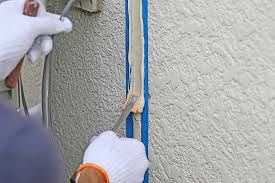Sealants are used in construction to seal gaps, joints, and seams in various building components such as walls, floors, roofs, and windows. They are commonly used in buildings to prevent water, air, and sound from entering or escaping from the interior of the structure. There are several types of sealants used in construction, each with its own unique properties and applications. In this article, we will discuss some of the most commonly used sealants in construction.
Silicone Sealants
Silicone sealants are one of the most popular types of sealants used in construction. They are known for their flexibility, durability, and resistance to extreme temperatures, making them ideal for sealing exterior building components such as windows, doors, and roofs. Silicone sealants are also resistant to UV radiation, which helps them maintain their color and flexibility over time. They can be used on a wide range of surfaces, including concrete, brick, metal, and glass.
Polyurethane Sealants
Polyurethane sealants are another popular type of sealant used in construction. They are known for their high tensile strength, durability, and resistance to weathering, making them ideal for sealing joints and gaps in concrete and masonry structures. Polyurethane sealants are also resistant to chemicals and abrasion, which makes them ideal for use in industrial applications. They are often used in areas that are exposed to high levels of traffic, such as parking garages and loading docks.
Acrylic Sealants
Acrylic sealants are a cost-effective option for sealing gaps and joints in construction. They are easy to apply, dry quickly, and can be painted over once dry. Acrylic sealants are commonly used in interior applications, such as sealing gaps between drywall and trim. They are also used in exterior applications, such as sealing gaps around windows and doors.
Butyl Sealants
Butyl sealants are commonly used in roofing applications to seal joints and seams in roofing materials. They are known for their excellent adhesion and flexibility, making them ideal for use on metal roofs, rubber roofs, and other types of roofing materials. Butyl sealants are also resistant to UV radiation, which helps them maintain their elasticity and durability over time.
Epoxy Sealants
Epoxy sealants are known for their high strength and adhesion, making them ideal for use in industrial applications. They are commonly used to repair concrete floors, walls, and other structures that are exposed to high levels of traffic and abrasion. Epoxy sealants can also be used to seal cracks and joints in concrete and masonry structures.
Polysulfide Sealants
Polysulfide sealants are known for their excellent chemical resistance, making them ideal for use in industrial and marine applications. They are commonly used to seal joints and seams in boats, tanks, and other structures that are exposed to harsh chemicals and saltwater. Polysulfide sealants are also resistant to UV radiation, which helps them maintain their elasticity and durability over time.
Asphalt Sealants
Asphalt sealants are commonly used in road construction to seal joints and cracks in asphalt pavements. They are known for their ability to withstand high levels of traffic and weathering, making them ideal for use on roads, highways, and other paved surfaces. Asphalt sealants are also resistant to water and chemicals, which helps them maintain their elasticity and durability over time.
In conclusion, there are several types of sealants used in construction, each with its own unique properties and applications. Choosing the right sealant for a particular application is important to ensure. That the structure is properly sealed and protected against water, air, and sound. Consultation with a construction professional is recommended to determine the best sealant for a specific construction project Additionally. It’s important to consider factors such as the surface to be sealed. The level of traffic or exposure to weather and chemicals, and the required level of flexibility and adhesion. It’s also important to follow the manufacturer’s instructions for application and safety precautions to ensure that the sealant is properly applied and does not pose any safety hazards.

